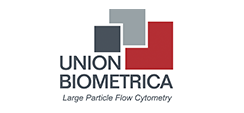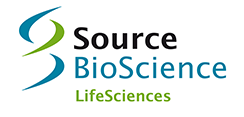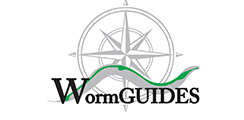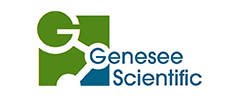|
Program
Schedule of Events
Workshops
Rooms and times have been reserved for workshops on Thursday and Saturday afternoons. Individuals interested in organizing a workshop should contact Monica Colaiacovo at
mcolaiacovo@genetics.med.harvard.edu. Workshop organizers will be responsible for coordinating all aspects of the workshop, including speaker presentations. The workshop schedule must be received by April 23, 2013 to be included in the program book.
Workshop organizers should include the following when contacting the meeting organizers:
- Title
- Names and institutions of all organizers
- Preliminary format and speakers
Confirmed Workshops
Mapping and Cloning Mutants from Whole Genome Sequence Data Using a Free, Cloud-based Pipeline
Organizer: Gregory Minevich, Columbia University
Speakers:
-
Gregory Minevich, Columbia University (pdf of slides)
-
Richard Poole, University College London
Whole genome sequencing (WGS) allows researchers to pinpoint genetic differences between individuals and significantly shortcuts the costly and time-consuming part of forward genetic analysis in model organism systems. Currently, the most effort-intensive part of WGS is the bioinformatic analysis of the relatively short reads generated by second generation sequencing platforms. We will present a free cloud-based pipeline, called CloudMap, which greatly simplifies the
analysis of mutant genome sequences. Available on the Galaxy web platform, CloudMap requires no software installation when run on the cloud, but it can also be run locally or via Amazon’s Elastic Compute Cloud (EC2) service. CloudMap uses a series of predefined workflows to pinpoint sequence variations in animal genomes, such as those of pre-mutagenized and mutagenized Caenorhabditis elegans strains. In combination with a variant-based mapping procedure, CloudMap allows
users to sharply define genetic map intervals graphically and to retrieve very short lists of candidate variants with a few simple clicks. Automated workflows and extensive video user guides are available to detail the individual analysis steps performed (http://usegalaxy.org/cloudmap).
Topics covered:
-
Choosing the correct type of mapping cross for a given genetic screen.
-
Analyzing mapping cross data.Variant subtraction of previously sequenced strains.
-
In silico complementation analysis.
-
Analyzing putative deletions.
-
Using CloudMap for nematodes or organisms other than C.elegans.
-
Running CloudMap on the Cloud, locally, or on Amazon's servers.
Novel Microscopy Techniques
Organizer: Javier Apfeld, Harvard Medical School
New advances in microscopy are opening new avenues for scientific inquiry. These innovations include new imaging devises (e.g. scanners, lensless optofluidic microscopes) and up and coming imaging techniques (e.g. optogenetics, novel genetically encoded sensors). The aim of this workshop is to highlight how these advances are being deployed in C. elegans, paying particular attention to the opportunities and challenges presented by these new methods.
Speakers:
- Eddie Hujber (Erik Jorgensen Lab), Nano-fEM (nanoscopic fluorescence electron microscopy).
- Nicholas Stroustrup (Walter Fontana Lab), The Lifespan Machine enables quantitative investigations into the statistical structure of aging.
- Adriana San Miguel (Hang Lu Lab), Computer vision and machine learning for complex phenotyping.
- Rex Kerr, Methods for multineuronal calcium imaging.
- Alexander Gottschalk, Combining imaging of neuronal activity with optogenetic manipulation.
- Nektarios Tavernarakis, Non-linear microscopy and optical projection tomography.
Strategies for Transgenesis
Organizer: Peter Boag, Monash University, Melbourne, Australia
A key technology for understanding gene function is the generation of transgenic animals. The aim of this workshop is to highlight the recent technological advances that allow for rapid generation of expression constructs and transformation of C. elegans. The advantages and disadvantages of various approaches will be discussed.
Speakers:
-
Recombineering: Mihail Sarov, MPI-CBG (pdf of slides)
-
MosSCI:
Christian Frøkjaer-Jensen, Jorgensen Lab, HHMI, Utah (pdf of slides)
-
Bombardment: Jenny Semple, Lehner lab, EMBL/CRG (pdf of slides)
-
Single/low-copy integration of transgenes: Shohei Mitani, Tokyo Women's Medical University School of Medicine (pdf of slides)
Bridging the divide between the C. elegans and parasitic nematode communities
Saturday, June 29
1:30 pm to 6:15 pm
Chairperson: Martin Chalfie, Columbia University
Organizing Committee:
-
Barton Slatko, New England Biolabs
-
Susan Strome, University of California, Santa Cruz
-
William Sullivan, University of California, Santa Cruz
Each year infections of animals and plants by parasitic nematodes cause many billions of dollars of agricultural damage. Over a billion people worldwide, particularly in developing nations, are infected by nematodes and suffer from the resulting debilitating diseases. Currently, only a few investigators address problems of parasitic nematodes using
C. elegans. We would like to encourage and facilitate more C. elegans researchers to do so. In this workshop, experts studying parasitic nematodes and their control will talk about the problems faced by their field and indicate areas where the
C. elegans community may help. The workshop will provide information about parasitic nematodes and efforts to combat them as well asample opportunity for discussions.
Speakers:
- Dr. Heidi Goodrich-Blair, Dept. of Bacteriology, Madison, WI,
A tripartite association:Steinernema nematodes, Xenorhabdusbacteria, and insects
-
Dr. David Bird, Dept. of Plant Pathology, North Carolina State University, Omic-empowered genetics of the root-knot nematode, Meloidogyne hapla:Mendelian and QT loci defining parasitism traits
-
Dr. Peter Jay Hotez,
National School of Tropical Medicine at Baylor College of Medicine, Urgent needs for R&D on human helminth infections
- Dr. Frederic Landmann, Dept of MCD Biology, UC Santa Cruz, The cell biology of Wolbachia-Filarial nematode symbiosis
-
Dr. Conor Caffrey, Center for Discovery and Innovation in Parasitic Diseases, Dept. of Pathology University of California San Francisco, Schistosomics:developing a discovery tool kit for the global flatworm disease, schistosomiasis
- Dr. Mark Blaxter, Institute of Evolutionary Biology, University of Edinburgh, More than just one "worm": nematode diversity revealed by the first fruits of the 959 nematode genomes initiative.
New tools and insights from mining genotype-phenotype relations across multiple genotypes of Caenorhabditis spp.
Organizers: Jan Kammenga and Basten Snoek, Wageningen University, The Netherlands; Gino Poulin, University of Manchester, UK.
Research in C. elegans has been instrumental for unravelling many genotype-phenotype relations. But almost all studies, including forward and reverse genetic screens, are dominated by investigations in the canonical single strain Bristol N2. In order to explore the full potential of the natural genetic variation and evolutionary context of the genotype-phenotype map, it is important to study these relations in other genotypes and related species. In this workshop we will highlight new tools and resources for investigating genotype-phenotype relations and illustrate the potential of exploring natural genetic variation in
Caenorhabditis spp.
Speakers:
-
Basten Snoek, Wageningen University, The Netherlands, Introducing WormQTL, a public archive and analysis web portal for natural variation data in Caenorhabditis spp.
-
Ben Lehner, Centre for Genomic Regulation, Barcelona, Spain, Insights into the natural variation of gene expression dynamics.
-
Patrick Phillips, University of Oregon, US, Presenting natural genetic variation and resources in C. remanei.
-
Gino Poulin, University of Manchester, UK, Deciphering natural genetic variation effects on hyper activated LET-60(RAS) signalling using an RNAi-based fitness assay.
-
Reza Farhadifar, Harvard, Cambridge, US, Evolution and genetic architecture of the first mitotic spindle in C. elegans.
-
Benjamin Lang, MRC, Cambridge, UK, Natural genetic variation as the basis for gene network reconstruction in C. elegans.
Dynamical Modeling From Data, aka “Worm Theory”
Organizers:
Saul Kato, Center for Theoretical Neuroscience, Columbia University; Michael Hendricks, Center for Brain Science, Harvard University
To understand how real-time behavior emerges from a nervous system, we must quantitatively characterize the dynamics of the nervous system as well as of the behavior itself. More work has been done in the area of quantifying worm behavior, but as methods of imaging the activity of neurons and muscles are becoming more precise and comprehensive, a quantitative modeling approach of neural activity is needed and should ultimately dovetail with quantitative models of behavior. What kinds of models are right for C elegans? For inspiration, we can look to approaches that have worked well in other settings and organisms -- e.g. differential equations, integral/cascade systems models, deterministic, and/or stochastic -- but in the end, model selection will be driven by what the data tells us and what questions we are asking. The speakers in this workshop will each present a project involving dynamical modeling, and in particular will discuss the decisions they made in selecting their model framework. Time will be allocated for questions and interruptions are encouraged!
Speakers:
- Shawn Lockery, Institute of Neuroscience, University of Oregon, Stochastic models of C. elegans neurons.
- Greg Stephens, Vrije Universiteit Amsterdam and Okinawa Institute of Science and Technology, Dynamics of control in the behavior of C. elegans.
- Quan Wen, Harvard University, How motor circuit and sensory feedback drive C. elegans locomotion.
N-Genomes Discussion Group
Organizer: Erich Schwarz, Cornell University
The Caenorhabditis Genome Analysis Consortium <http://wormgenomes.caltech.edu/consortium.html> has been working to decipher the genomes from six gonochoristic(male-female) relatives of C. elegans (C. remanei, C. brenneri, C. japonica, C. sp. 5 JU800, C. sp. 9 JU1422, and C. angaria PS1010) versus three hermaphroditicgenomes (the published C. elegans and C. briggsae, and the recently sequenced C. sp. 11 JU1373). This work has been delayed by misassembly, cryptic microbial contamination,unresolved alleles from heterozygosity in outbreeding species, and third-generation sequencing data which are both promising and difficult to incorporate. Recentadvances in genomic software have surmounted these difficulties, allowing a mature set of genomes to be assembled and analyzed. I will review the state of the "Ngenomes" (with N currently = 9) and lead a discussion on their analysis. Non-Consortium members with an interest in multigenome analysis of C. elegans are welcometo attend!
Speaker: Erich Schwarz, Cornell University
Engineered Nucleases for Genome Editing in Nematodes
Organizer: Hillel Schwartz, HHMI
Co-chairs:
- John Calarco, Harvard Univ.
- Ari Friedland, Harvard Medical School
- Te-Wen Lo, Univ. of CA, Berkeley
- Yonatan Tzur, Harvard Medical School
- Jordan Ward, Univ. of CA, San Francisco
Recent technological developments have made it possible to construct nucleases with targeted specificity: ZFNs (Zinc Finger Nucleases), TALENs (Transcription Activator-Like Effector Nucleases), and CRISPR-Cas (Clustered Regularly Interspaced Short Palindromic Repeats). Using any of these methods, a researcher can induce double-strand breaks at the sequence of their choice. These breaks are repaired imperfectly by non-homologous end-joining (NHEJ) to leave small deletions or are repaired by homologous recombination with an intact copy of the locus, which should permit the user to knock in precise changes at any site in the genome. Researchers will describe their experiences using these techniques in C. elegans and other nematodes and will discuss the potential for further developments.
Speakers:
- Te-Wen Lo, Univ. of CA, Berkeley,
Advances in Targeted Genome Editing Across Species: Heritable Designer “Knock-In” and “Knock-Out” Modifications
- Jordan Ward, Univ. of CA, San Francisco,
Using CRISPRs to engineer the C. elegans genome
- Vivian Chiu, CalTech,
Transgene-free genome editing in nematodes using CRISPR-Cas
- Ari Friedland, Harvard Medical School,
Heritable Genome Editing in C. elegans via a CRISPR-Cas System
Worm Variety Show
Saturday, June 29th: Back by popular demand! Join us after the barbecue for the fifth Worm Variety Show hosted by Curtis Loer and Morris Maduro. This year, contributions are
being solicited from Worm Labs in advance of the show. Help us make this a community experience to remember! Please see here for more information and links to videos of past Worm Shows.
Special Events
Dinner for First-time Attendees - SOLD OUT
Wednesday, June 26
DeNeve Private Dining Room
5:30 pm – 7:00 pm
Are you a first time attendee to the C. elegans Meeting? The conference will have hosted tables at dinner on Wednesday, June 26 to meet other newcomers, organizing committee members and GSA staff. Attend this casual dinner to enhance your conference experience.
There is no cost for those staying on campus with a meal card. Please indicate when you register for the meeting that you would like to sit at a hosted table.
Genetics Society of America Faculty Mentoring Social
Thursday, June 27
Grand Ballroom Terrace
7:00 pm – 8:00 pm
This event is organized by senior C. elegans faculty for current and recently hired junior faculty members. New faculty members will be introduced followed by general discussion. Heads of
C. elegans laboratories are all encouraged to attend.
Getting Published Discussion - SOLD OUT
Please note new location and time:
Friday, June 28
7:00 pm - 8:00 pm
De Neve Plaza Room
This lunch is an excellent opportunity for graduate students, postdoctoral fellows and undergraduate students to have informal conversations with GENETICS and G3 journal editors about the peer-review and scientific publishing process in general, and more specifically, the GSA's two journals. Participants can sign up for the dinner when they register for the meeting.
Topics may include: the peer-review process, open access, writing to get published, where and how can your work have the most impact, how to create effective figures and tables, the standards of each journal, revisions and editing, and ethical issues in publishing. Participants can sign up for the luncheon when they register for the meeting.
Advocacy Luncheon - SOLD OUT
Saturday, June 29
DeNeve Private Dining Room
Staff members from the FASEB Office of Public Affairs will discuss the latest policy and legislative news affecting funding for NIH, describe why it is important for scientists to speak out about issue that affect their grants and research and share tips for engaging in advocacy. Sign up online with registration.
Worm Art Show
The C. elegans community is fortunate to have generated many wonderful biological images and artistic renditions of worms over the years. The C. elegans
community is especially blessed with a very large pool of highly talented, creative and entertaining people which makes our close community quite unique! The Worm Art show will
take place during the poster sessions. Please bring your work and set up on the first day of the poster sessions. There will be a row of poster boards and tables on which to place items. We have had an excellent turnout in the past and we expect that there will be many interesting entries this year. Many past winners have gone on to become faculty! The winners are chosen by ballots submitted by the meeting attendees. Winners will be announced at the last plenary session in Royce Hall.
CATEGORIES:
Immunofluorescence/Nomarski/EM Images
any images pertaining to C. elegans biology
Mixed Media
any artwork inspired by C. elegans or many hours of picking and imaging
Past entries in this category have been stained and blown glass, wood mobiles, music, sculpture, drawing and painting.
Multimedia
for example movies and flash cartoons [5 minute maximum length]. These will be posted on the website, submit by June 15 to Ahna Skop,
skop@wisc.edu via DropBox.
Embryo Art
A special challenge this year will be to present artwork that relates to or honors the C. elegans embryos.
AWARDS & PRIZES
Awards will be given in the categories noted above. In addition, prizes will be awarded for: Most Humorous and Best of Show, as voted by attendee ballot.
Please bring your artwork to the meeting with a typed slip of paper with the following:
Name (s):
Title of work:
Description of reagents used:
Lab:
School or Institution:
Email:
Please send a digital image of your work to Ahna Skop (skop@wisc.edu) prior to the meeting for use during prize announcements and archiving.
Notes:
- The artwork title and name should be placed near your work.
- Please put your name on the back of your work as well.
- It is preferable to mount your work on poster board or have it framed (reminder: we only have thumbtacks to mount).
- You are responsible for hanging and taking down your artwork before and after the meeting.
- The art show poster board area will be in Pauley Pavilion.
- For more information, contact Ahna Skop: skop@wisc.edu
Genetics Society of America Poster Awards
2013 Award Recipients
Awards will be given for the best poster presentation by GSA student members. If you are the first AND presenting author on an abstract and a graduate or undergraduate student you may nominate your poster for the competition. The winners will be announced in the plenary session on Sunday, June 30.
Eligibility Requirements:
- First and presenting author
- Undergraduate or graduate student
- Member of the Genetics Society of America
|
Important Dates
| Meeting Registration Deadline |
May 22, 2013 |
| Platform and Poster Assignments Available online |
May 22, 2013 |
| Housing Reservation Deadline |
June 7, 2013 |
| Abstract Search and Program Planner online |
June 14, 2013 |
| Mobile website available |
June 18, 2013 |
Thank You to our Sponsors















Follow the Conference:
#WORM2013

Like Genetics Society of America on Facebook |